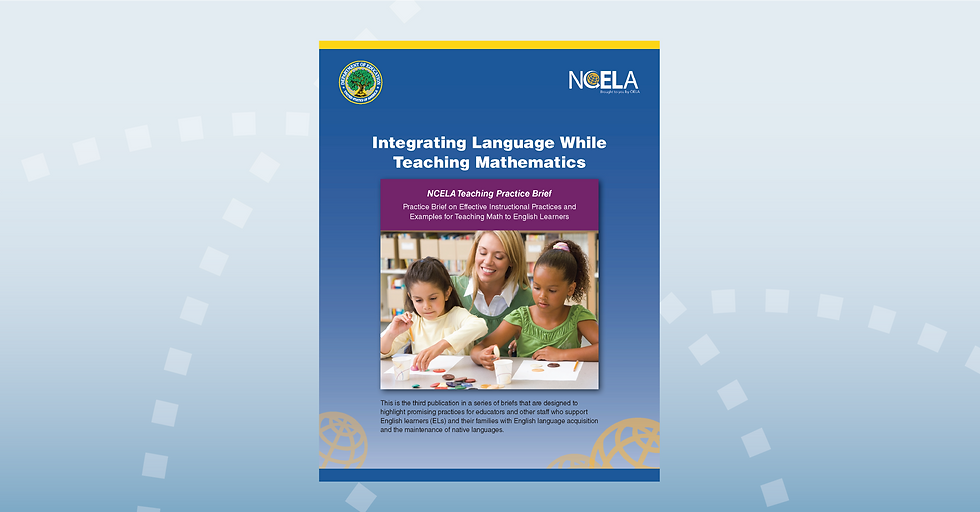Provide Support for English Learners to Engage in Mathematical Practices
- Patricia Lopez-Hurtado

- Apr 25, 2022
- 2 min read
By Haiwen Chu and Tuyet Tran

What does it mean to do mathematics? One answer lies in the mathematical practices, which include many of the processes that are central to the creation of new mathematics, such as problem solving, and fluently using different representations. These very practices are also useful for communicating those ideas and developing new ways of thinking. For English Learners, it will be important for teachers to offer choices of practices as well as choices of language as they engage in mathematical practices in interaction with others. As explored in greater detail here [link to brief], teachers can offer different choices of action and choices of language for English Learners as they negotiate these practices with their peers.
Imagine a class of 9th grade students learning about quadratics and parabolas. As explored further in the brief, a guidance card modeling both strategic actions and language around which to explain the strategy can be given to the students when discussing this graph in pairs.

What you can do | What you can say |
Describe the shape of the graph. |
|
Find and describe key points of the graph. |
|
Describe how the graph is changing |
|
Student A: I am going to describe the shape. Something that I notice about this graph is that on the left it is going down, but on the right, it is going up
Student B: Yes, I can see that between the x-values -8 and -1, the graph is decreasing. I want to talk about the x. I see the x-intercepts are -6 and 4.
Student A: Ah, okay. Maybe we can use this part… Two points that are symmetrical in this graph are (-6,0) and (4,0).
Student B: Sure, that makes sense. So, when I look in between I think I can say… The minimum point on the graph is…. It looks like -25 for y and -1 for x.
Student A: I guess that means… The y-intercept of the graph is -24, because it’s just above the -25.
Student B: That looks right, because the graph is changing slower between -2 and 0 on the x compared to the values on the outside on the left and right. So it reaches a low point in between and then starts increasing on both sides.
For example, with the support of the guidance card and modeled language (emphasis in italics), students can participate in a dialogue such as the following:
As we can see from the above, guidance cards are not intended to be used as a part of a scripted conversation that is determined in advance. Rather, the guidance cards serve to facilitate an organic, interactive process between two students as they explore how to understand the graph. Over time, English Learners become more comfortable reflecting on their strategies, connecting their ideas, and expressing their mathematical reasoning.
Additional approaches and resources regarding this practice are explored in the full “Integrating Language While Teaching Mathematics” brief. Click here to learn more.



Comments